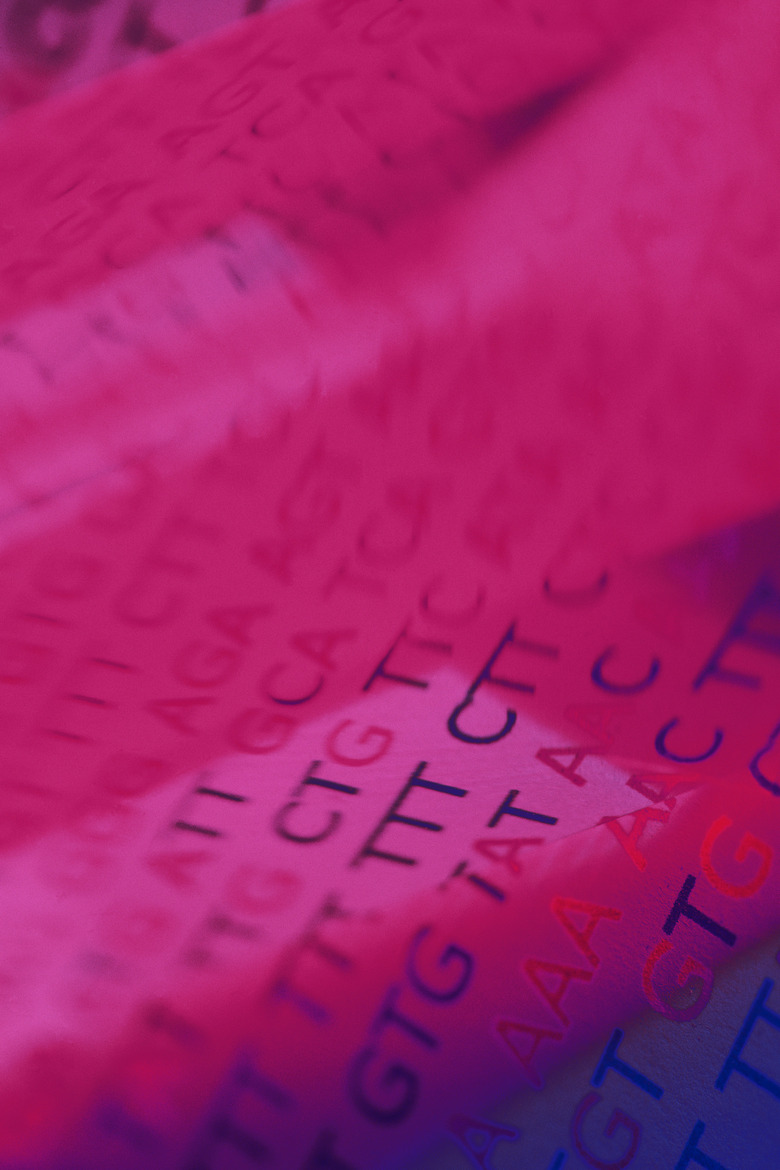What Is The Relationship Between Nitrogen Bases & The Genetic Code?
Your whole genetic code, the blueprint for your body and everything in it, is made up of is made up of a language with only four letters. DNA, the polymer that makes up the genetic code, is a sequence of nitrogen bases hung on a backbone of sugar and phosphate molecules and twisted into a double helix. The chain of nitrogen bases is translated into the proteins and enzymes that make up all of life in a system that has been described as elegant in its simplicity.
The Four Nitrogen Bases, Plus One
The Four Nitrogen Bases, Plus One
The four nitrogen bases that make up DNA are adenine, guanine, cytosine and thymine. When the genetic information is copied to RNA, a similar molecule that is used to create a protein, thymine is replaced by the base uracil. In the genetic code, the bases are abbreviated A, G, C, T and U. Adenine and guanine are derived from the compound purine, and cytosine, thymine and uracil are derived from the simpler compound pyrimidine.
The Pairing Process
The Pairing Process
To replicate DNA or to translate DNA to RNA, you need to unzip the double helix and create an exact replica of the code. To do this, the nitrogen bases are strictly paired, A to T or U and C to G. The ends of these molecules match each other in such a way that a hydrogen bond, a strong intermolecular force, can form only between matching bases. Special proteins travel up and down the DNA strand facilitating the copying of the genetic code into RNA so that it can be decoded to create proteins.
Coding for Amino Acids
Coding for Amino Acids
Once the DNA has been translated into RNA, the sequence of letters must be decoded. The RNA is carried to the ribosome, the organelle that manufactures proteins. The ribosome reads the genetic code in three-nitrogen-base "words" called codons. Special codons mark the beginning or ending of a sequence. The rest of the codons each represent an amino acid, the building block of proteins. Twenty amino acids exist, and 64 possible combinations of letters, so some amino acids are represented by more than one codon.
Genes and Proteins
Genes and Proteins
The start and stop codons mark the beginning and end of a gene. A single gene codes for a single protein, which can be folded into an arrangement that acts as a structural part of the organism or an enzyme, a specialized protein that catalyzes a process. Humans have between 50,000 and 100,000 genes to represent all the structures and processes that make up the body and keep it functioning.
Cite This Article
MLA
Becker, Andrea. "What Is The Relationship Between Nitrogen Bases & The Genetic Code?" sciencing.com, https://www.sciencing.com/relationship-between-nitrogen-bases-genetic-code-18387/. 24 April 2017.
APA
Becker, Andrea. (2017, April 24). What Is The Relationship Between Nitrogen Bases & The Genetic Code?. sciencing.com. Retrieved from https://www.sciencing.com/relationship-between-nitrogen-bases-genetic-code-18387/
Chicago
Becker, Andrea. What Is The Relationship Between Nitrogen Bases & The Genetic Code? last modified August 30, 2022. https://www.sciencing.com/relationship-between-nitrogen-bases-genetic-code-18387/
